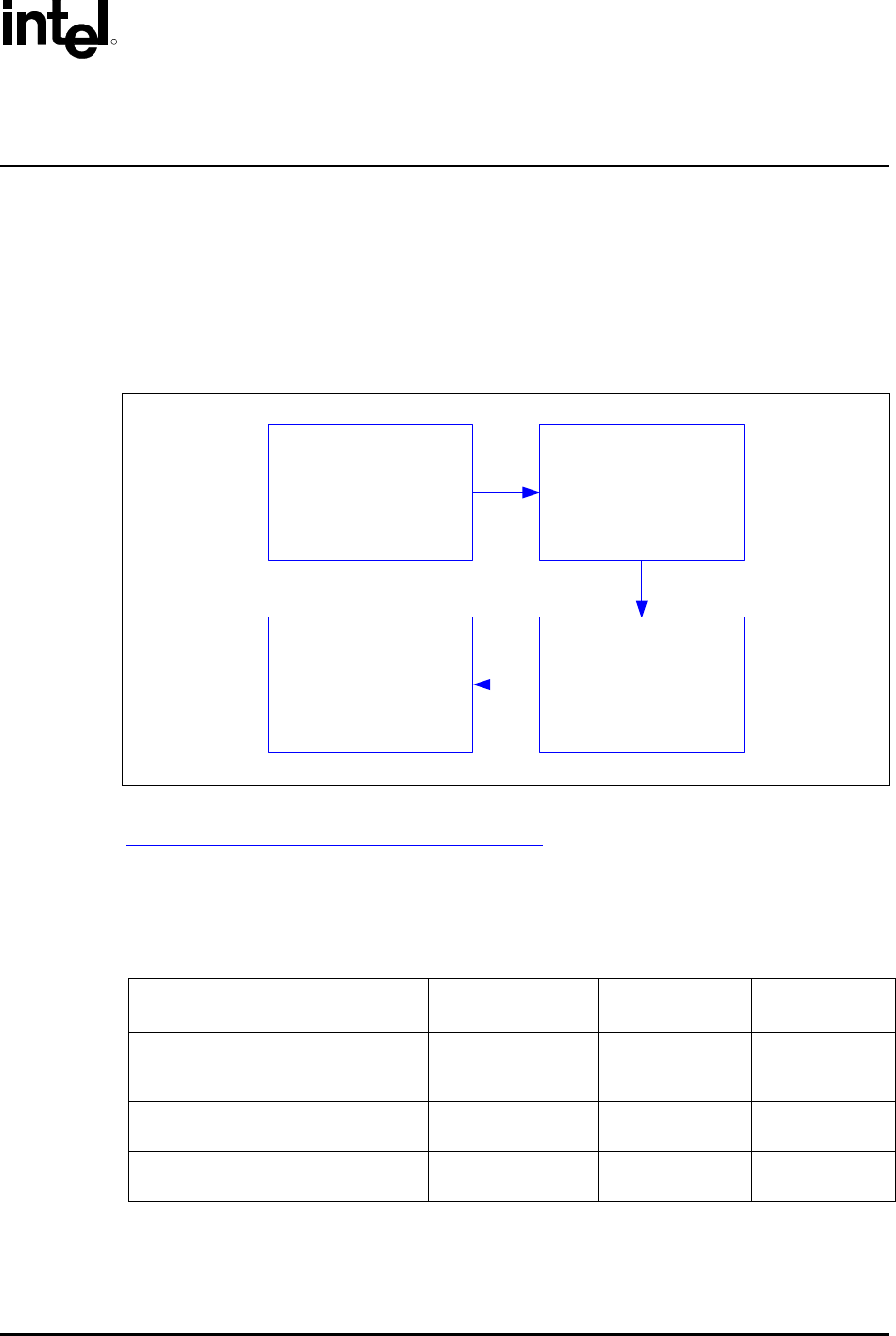
R
mPGA604 Socket Design Guidelines 29
5 Environmental Requirements
Design, including materials, shall be consistent with the manufacture of units that meet the
following environmental reference points.
The reliability targets in this section are based on the expected field use environment for a desktop
product. The test sequence for new sockets will be developed using the knowledge-based reliability
evaluation methodology, which is acceleration factor dependent. A simplified process flow of this
methodology can be seen in Figure 5-1.
Figure 5-1. Flowchart of Knowledge-Based Reliability Evaluation Methodology
Establish the Market/
Expected Use
Environment for the
Technology
Develop Speculative
Stress Conditions Based
on Historical Data,
Content Experts, and
Literature Search
Perform Stressing to
Validate Accelerated
Stressing Assumptions
and Determine
Acceleration Factors
Freeze Stressing
Requirements and
Perform Additional Data
Turns
A detailed description of this methodology can be found at:
http://developer.intel.com/design/packtech/245162.htm
The use environment expectations assumed are for desktop processors, based on an expected life of
7 to 10 years, are listed in Table 5-1. The target failure rates are <1% at 7 years and <3% at 10
years.
Table 5-1. Use Conditions Environment
Use Environment
Speculative Stress
Condition
7 Year Life
Expectation
10 Year Life
Expectation
Slow small internal gradient changes due
to external ambient (temperature cycle or
externally heated).
Temperature Cycle 1500 cycles with a
mean ∆T = 40
O
C
2150 cycles with
a mean ∆T =
40
O
C
High ambient moisture during low-power
state (operating voltage).
THB / HAST 62,000 hrs at
30°C, 85% RH
89,000 hrs at
30°C, 85%RH
High Operating temperature and short
duration high temperature exposures.
BAKE 62,000 hrs at
Tjmax
89,000 hrs at
Tjmax
